Jump racing kills: Should horses risk their lives for our entertainment?
Heavy rain may have put paid to yesterday’s card at Cheltenham, but it did serve as temporary respite for those animals forced to put their lives at risk. James Moore meets the people who are fed up with the rising number of horses dying over the jumps

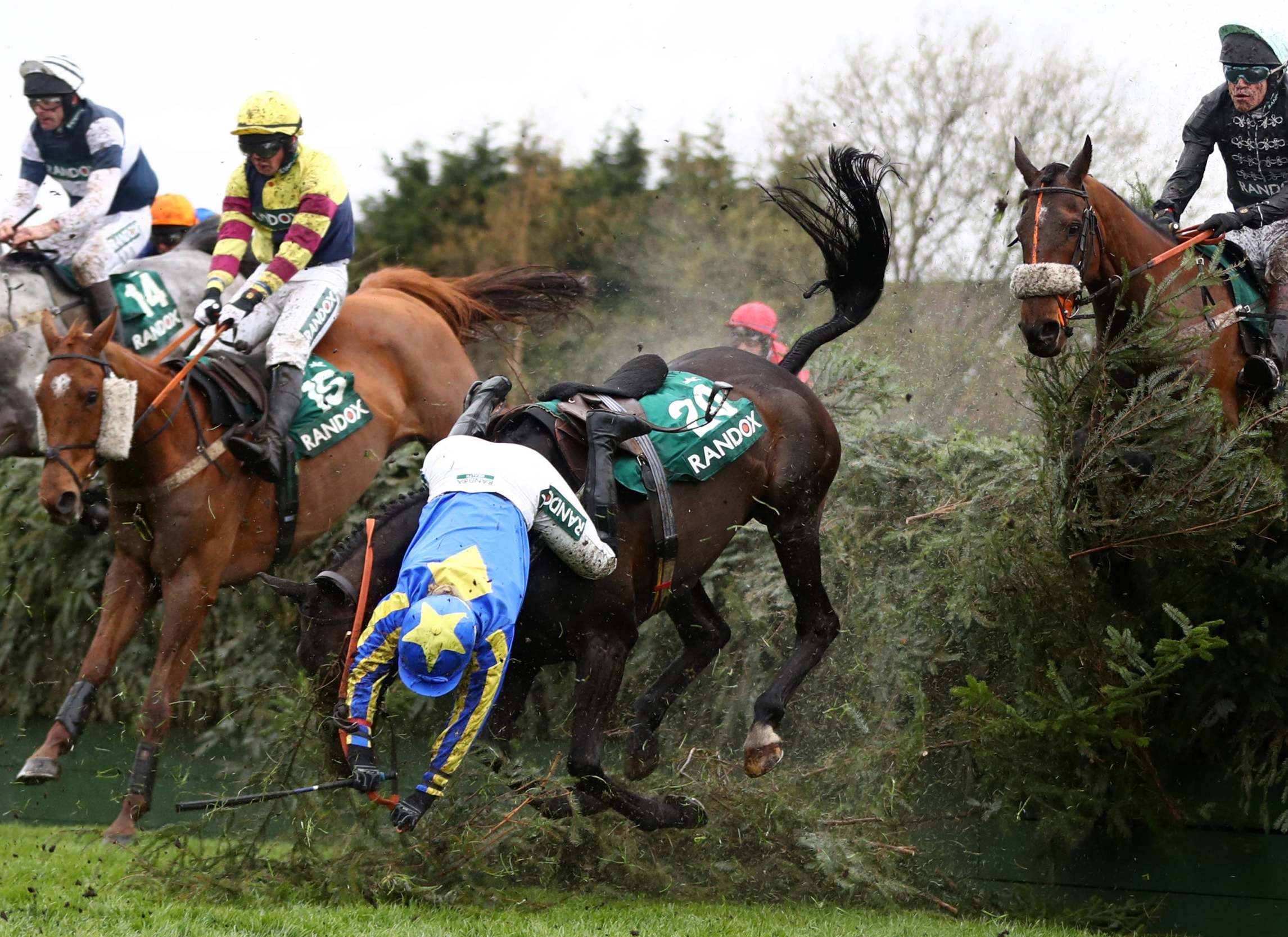
The scene that greets a visitor to Lawney Hill’s gallops is one that might make a poet weep. They are in the middle of an area of outstanding natural beauty that well deserves the designation. As we watch Laurium, a horse that showed real potential while at Nicky Henderson’s powerful yard, trace a meandering path back to his stable against a backdrop of Oxfordshire wooded hills, the blood and thunder of the fierce debate over the ethics of jump racing seems a million miles away.
But it is because of the debate that I’m here. It starts to heat up every year as the flat racing season tails off and the jumps take centre stage. All it will take to bring it to boiling point is the erection of the dreaded green screens around a high-profile horse after a fall during a major race at Cheltenham, or Sandown Park, or Aintree, or any of the other big jumps tracks.
Dene Stansall, horse racing consultant for Animal Aid, will start getting calls from the media if, or more likely when, this happens. In the meantime, he plays a major role in keeping the pot simmering. A former punter who speaks with the passion of a preacher, he has been at the centre of a highly effective campaign that has kept the spotlight on issues of equine welfare and the debatable ethics of allowing horses to risk their lives for our entertainment.

Last year, for example, he spearheaded a petition calling for the creation of “a new independent welfare body to protect racehorses from abuse and death” that attracted more than 100,000 signatures. Launched via the government’s petitions website, that was more than enough to secure a parliamentary debate and a government response. The latter didn’t ultimately amount to much. The government ultimately said that it “does not consider it is necessary to create a new body to protect racehorse welfare”.
But if Whitehall thinks that draws a line under the matter it has reckoned without Stansall. The website horsedeathwatch.com, run by Animal Aid, will continue to list the names of all the runners that breathe their last on Britain’s racecourses. Hashtags such as #YouBetTheyDie – it was used by Ricky Gervais on Grand National day earlier this year – will continue to do the rounds on Twitter. Stansall means for the spotlight to be a harsh one. He tells me he was once a successful punter, who was able to buy a sports car with his biggest win. The grandson of a bookie, he did a stint in a Ladbrokes betting shop himself. So what made him bite the hand that once fed him?
“I’ve seen some of the greatest horses run; Nashwan, Bustino,” he says, reciting the names with the respectful tone adopted by a true turfiste when speaking of the racing legends they’ve witnessed thundering down the track. “I was a big fan. I bet heavily. What changed me was when I saw a horse die on a racecourse. It was a harrowing scene. And nobody said anything. They just moved on to the next race. I just couldn’t stand it.”
That sparked Stansall’s Damascene conversion to the cause of animal rights. He says they put up the website back in 2007 in an attempt to force the industry to “come clean” on fatalities. Data on injuries and deaths is now published by the British Horseracing Authority (BHA) and it shows a declining trend. The governing body says the fatality rate has reduced by 20 per cent over the past two decades. Over the course of the past five years, the average stands at 0.39 per cent of runners for jump racing, so four out of every 1,000 horses that line up – the lowest on record.
I know what kills horses. It’s the demands of the fences, the demands made on low-ability horses. The lack of decent facilities at racecourses. It’s just too much
The BHA says the long-term injury rate has also fallen by 32 per cent and the faller rate has declined by 30 per cent over 20 years. While the number of fatalities over the jumps is indeed small as a percentage, it is still four times the rate of fatalities on the flat. Stansall is unimpressed. “The figure is meaningless. It’s just a number,” he says, arguing that the horse death-toll website, with the names of the runners, is a better way of illustrating the reality of the risks horses take for the public.
“I have two ex-racehorses and I have re-homed many many more. I would never ever put a horse I cared about in a jump race, and not a flat race either, no matter what the value of it was. Nearly a year on since we put that petition up we still have a huge number of horses dying.
“I know what kills horses. It’s the demands of the fences, the demands made on low-ability horses. The lack of decent facilities at racecourses. It’s just too much. Racing needs a root-and-branch review, not tweaking around the edges.”
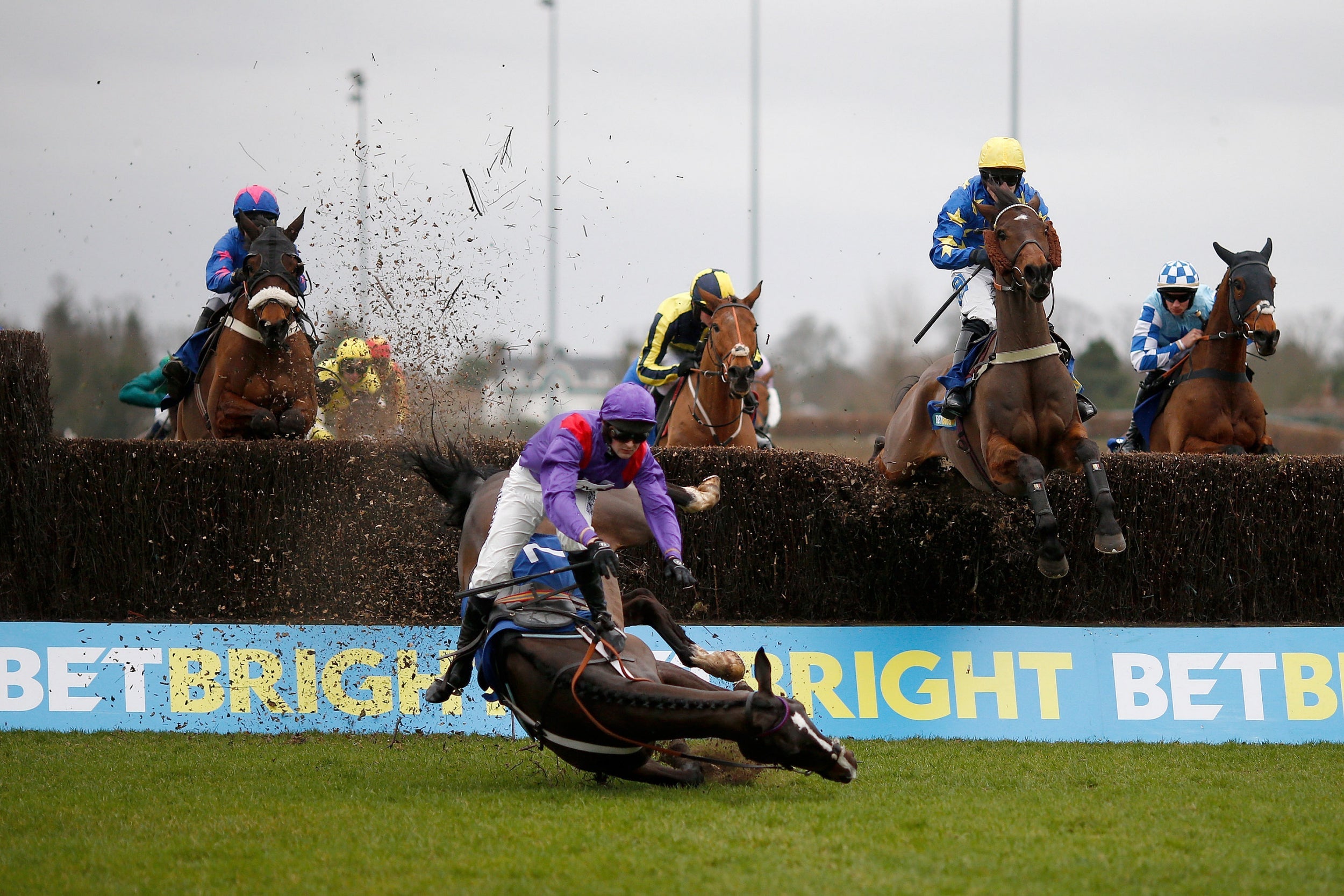
Stansall says that he wouldn’t have a problem with racing coming to an end but insists he is not after a ban. He simply wants the public made aware of the issues. But he would like to see the end of Britain’s most high profile and controversial race, Aintree’s Grand National, and he wants to see other reforms put into practice too. These would include an end to fixed brush hurdles used at some tracks and a ban on the whip. When it comes to the latter he’s not alone, notwithstanding the introduction of padded whips that rarely mark horses but have been criticised by some parts of the racing industry as ineffective.
“We need the public to be fully aware that these horses are exploited animals at serious risk of injury and death. While that continues we can’t support racing. And we will carry on the campaign,” he says. Even Stansall’s opponents in racing admit to a certain respect for him and his campaigning zeal, albeit a grudging one. But they argue that a ban is ultimately his endgame.

Stansall and Animal Aid are, to be fair, towards the radical end of the animal rights movement. But as the debate has progressed, even some of racing’s devotees have had cause to question what they have been watching. During the course of my research for this piece, I approached Scott White, the man who first got me into horse racing, which ultimately led to me taking a job on the short-lived racing/sports betting newspaper The Sportsman.
An avid punter, who has also been involved in organising race sponsorships during the course of a career in public relations, he has always had a preference for flat racing over jumps but he was once nonetheless a regular at Cheltenham and has enjoyed some of his biggest wins betting on the National. His response, when I asked about his feelings about the jumps today, potentially spells trouble for the jump racing industry.

“Growing up with the National – Red Rum primarily – I’d always had an interest in the race. Cheltenham too, as a regular watcher and subsequent attendee where I’ve had great joy. Then – as I grew older – I started going off chase races due to fatalities. I remember adoring horses like Strong Promise and Edelweis du Moulin, which I think both were lost. The dreaded screens going around an injured horse (and no gun sound), everyone saying how gutted they were, and still the next race came around and everyone forgot and got excited again in pursuit of a win.”
Those green screens, erected to give an injured horse, and sometimes an injured jockey, privacy, to keep them calm and to assist veterinary/medical staff in their work, seem to be a common factor in those who come to have doubts about the ethics of racing’s winter code. “I can’t watch the Grand National these days, even though it’s far less demanding than when I used to ‘enjoy’ it,” says White.
He says he will still bet on hurdle races. While working for Scottish Equitable, a life insurer, he won the argument that its sponsorship of a series of races should be confined to the smaller fences. But these days he mostly sticks to the flat. Lawney Hill looks thoughtful when I read his words out to her. “I’d love to bring Scott here and talk to him so he can see how much we think about our animals, how much we care about them,” she says. “One of the things that hit me about the research carried out is that 64 per cent of traumatic injuries to horses take place in the field.”
She tells me the story about Royal Irish Hussar – a one-time favourite for Cheltenham’s Triumph Hurdle – who returned from a day in the open air with a nasty gash that required six stitches the day before he was due to race. “We looked around the field and couldn’t find anything that could have caused it. The fact is injuries to animals are going to happen. But when it comes to racing they have come down dramatically. We are doing everything that we can.”

Hill’s is a small yard. There’s no fancy room for well-heeled owners. Those who have horses with her are invited into her home for a coffee and a chat, something she clearly likes doing, when they arrive to visit their animals. She’s a no-nonsense countrywoman, with a storyteller’s gift, who is perhaps best known for the role she played in helping to get former Olympic cycling champion Victoria Pendleton ready to ride as an amateur at the Cheltenham Festival.
She tells me she sometimes wishes she could give up the game. She and her husband have a good-sized arable farm as well as their stables and the life of a small trainer is not an easy one. If they get good horses they are frequently moved on to more fashionable trainers before they can benefit from them. Hill regularly has to deal with owners who don’t pay their bills, or complaints about handing over the relatively small amount of money it costs to have their horses put out to grass during the summer.
But she still loves the life. It’s like a drug to her. That much is clear from her home, which is full of racing memorabilia. So she’s found a compromise, restricting her roster of owners to a small number of people she regards as friends, who won’t stiff her on a bill and who don’t have unrealistic expectations.
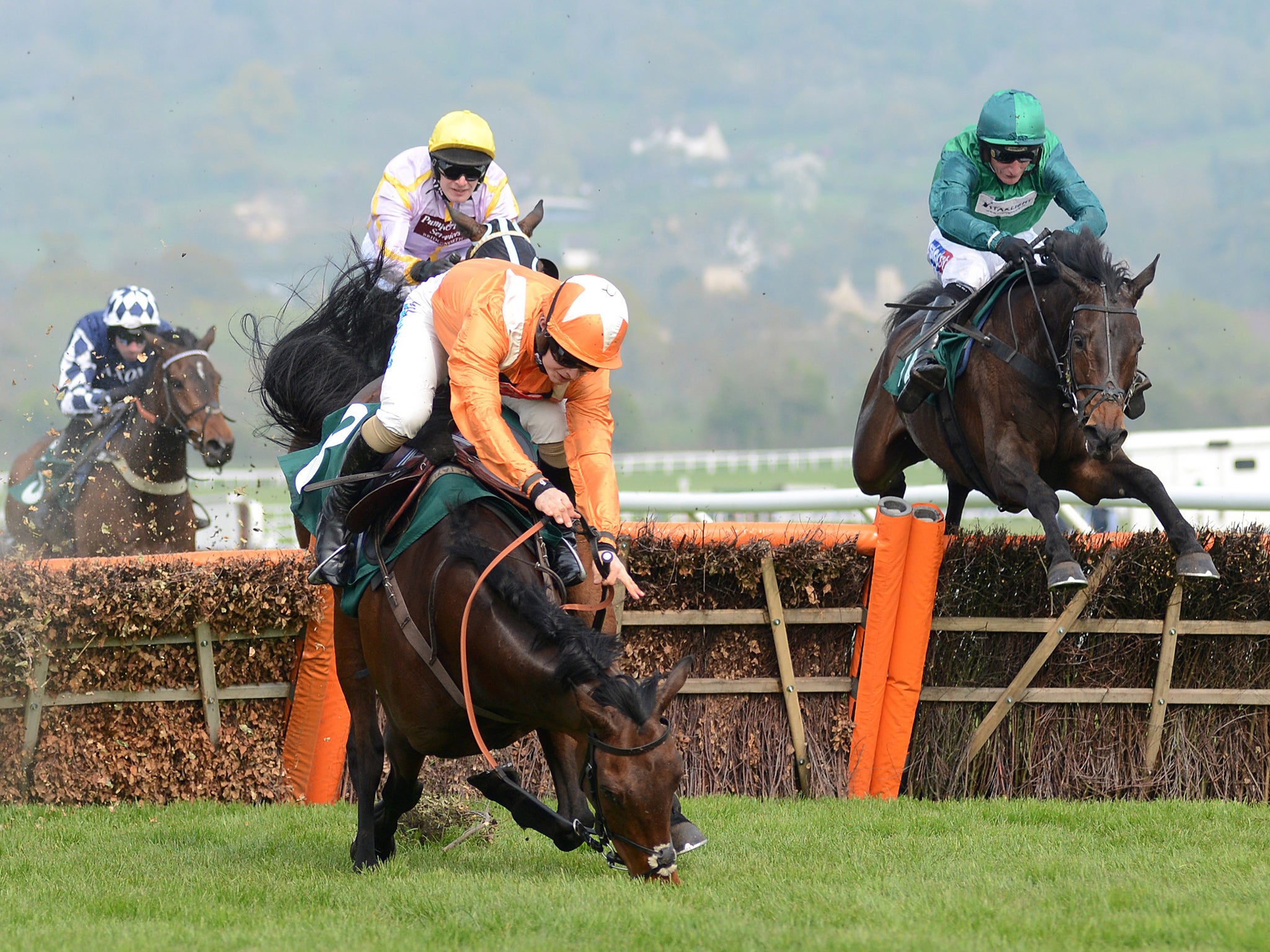
The welfare of their horses is something she clearly takes seriously. In the bathroom, I even spot a horse welfare book atop a pile of trainers’ magazines. Her abiding love of horses is something that shines through and her yard is like an equine hotel. I’m even treated to a demonstration of her latest gadget: an electronic massager she first used on her hip but has adapted for her horses.
“It [racing] is never going to be risk-free. You can’t mend traumatic fractures in horses as well as the humans you see in Doha [for the World Athletics Championships]. They’re not good patients. It would be great if we could mend a broken leg because then the horse’s life wouldn’t have to end. That’s why the vets are doing so much work.”
Without racing these horses wouldn’t be bred. So is their life better for having been alive? In the majority of cases I think they have lives worth living
Hill’s gift is working with difficult horses. It’s a double-edged sword because if you have ability to handle them then that’s what you get. Hill says she works to rekindle the enthusiasm of horses like Royal Irish Hussar or Laurium. But if she can’t do that she will find them another life, in a new home. “We now have a proper agreement, so when that horse moves, their new owners have to inform us. We don’t want one of our horses ending up at a cheap sale in Reading. That’s what we’re having the horses chipped.”
James Given primarily trains on the flat, although he also has a jumps licence. A qualified vet, he’s a member of the sport’s Horse Welfare Board, set up by the BHA. Givens says he has thought deeply about what he does and asked hard questions of himself. Having done that, he thinks the risks involved in racing are justifiable.
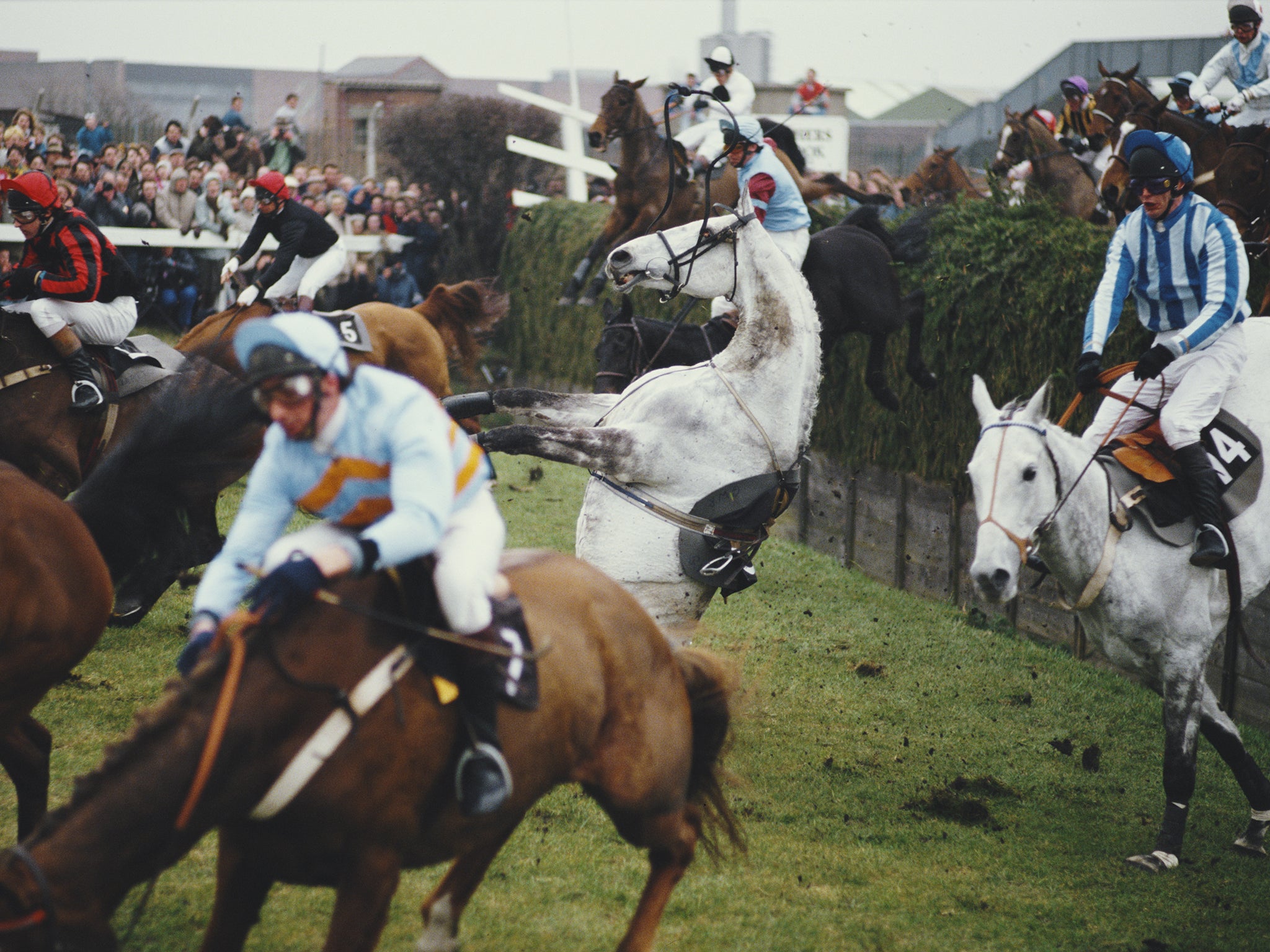
“My ethical argument is utilitarian, it’s a balance of harm and benefits, in contrast to people who are anti-racing. They are never going to approve of it. My belief is the majority of people don’t hold that view. But the debate brings into focus the social contract and we have to accept society’s views are changing all the time, they have moved and that’s mostly for the best. A couple of hundred years ago we sent children up chimneys, for example.
“This means racing can’t just rely upon entitlement and the argument that says we have always done it so we should always be allowed to do it. We have to be more accountable. I know that horses can be harmed, but that’s outweighed by the benefits of racing. That’s not just to the humans, in terms of economic interests, and the employment racing provides, and the pleasure it gives. It’s of benefit to horses too, because if it’s wrong for the horse that justification fails.”

That economic interest he speaks of is considerable. Jump racing forms a significant part of an industry that pumps £3.5bn into UK plc and provides employment (directly or indirectly) to approximately 80,000 people, many in rural areas where jobs are hard to find. “There was an ethicist who developed a concept of a life worth living,” says Given. “An animal’s welfare across its life needs to be protected so that it’s better off having lived than if it were not born at all.
“Without racing these horses wouldn’t be bred. So is their life better for having been alive? In the majority of cases, I think they have lives worth living. But racing has to keep striving to improve and look for ways to improve safety.”
Research into how fences can be modified will enable horses to see them better. A new colour, a bright yellow, is being trialled in preference to the orange you’ll currently see on most courses’ fences and hurdles. It has been found horses can’t see that colour well. The new one could change that. Fences have also been modified, for the National in particular. The changes made to Aintree’s famous Becher’s Brook have been much discussed. But it is not the only fence that has been made easier for horses to handle.
What doesn’t do racing any favours is the sport’s conservative element, which complains that the famous race is no longer a “true test”, as if a four-and-half-mile steeplechase over uniquely challenging fences could ever be considered as something other than that.
Perhaps we should give the last word to the RSPCA, which is Britain’s biggest and most prominent animal welfare organisation. Dr Mark Kennedy is an animal welfare scientist and the organisation’s senior scientific manager for equine. When it comes to the issue of jump racing, he eschews emotion in favour of facts, data and a pragmatic approach.
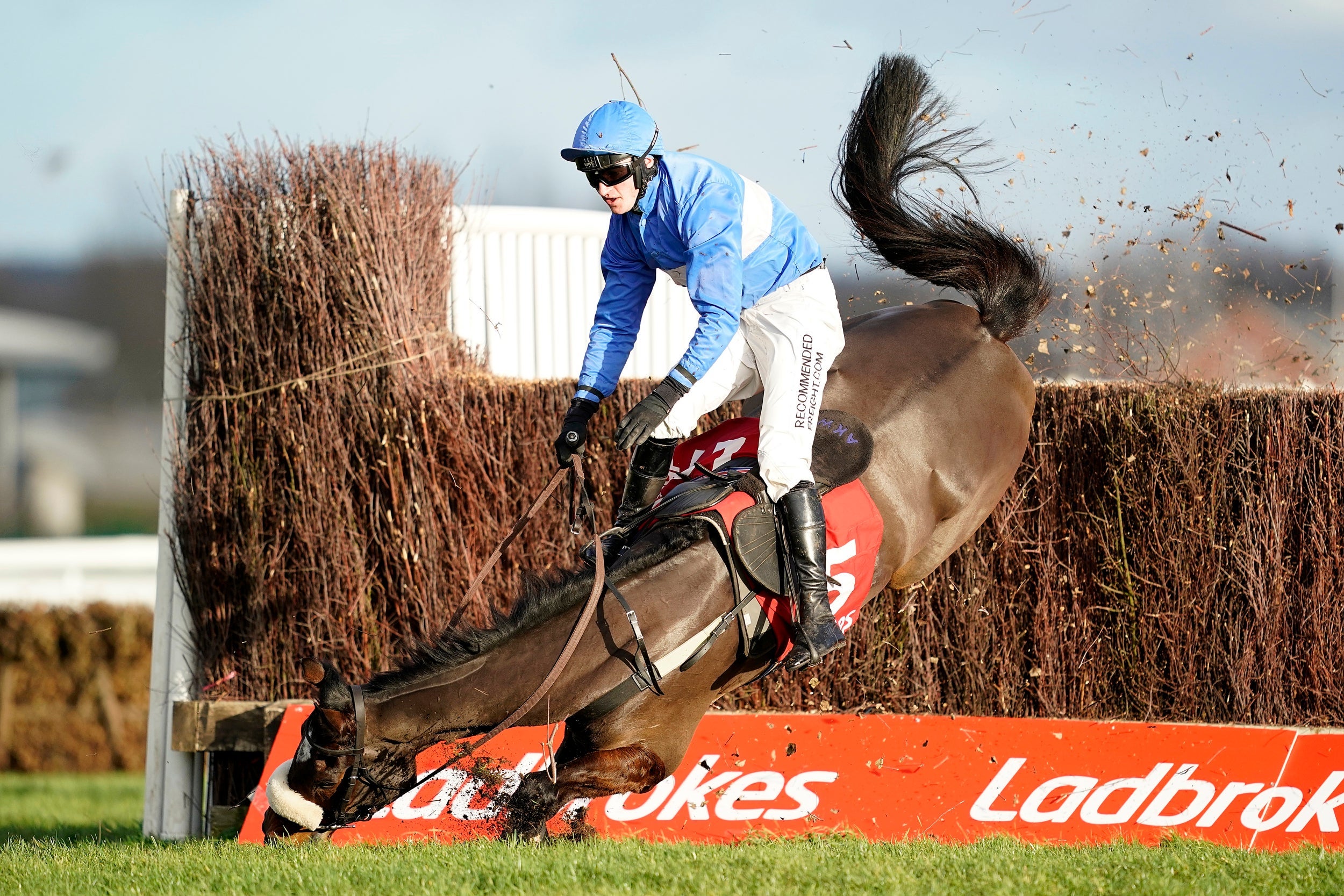
“It is clear that jump racing presents more risk for horses, certainly in terms of fatality,” he says. “You then have to ask why that is the case. One of the most obvious factors is that in jump racing you have horses jumping at speed over obstacles in the company of other horses. We have made progress by focusing on key points, for example, the issue with rotational falls. This is when the horse somersaults and lands on the head or the back. Fatalities can follow.”
Kennedy recognises the ongoing work with respect to this that has been done by the BHA, the changes to fence design and conformation it has mandated to make them safer. But he says that there is still a need for more research. When I ask him if the sport is cruel, his response is careful.
“It’s a good question. I think we have to look at the risk and whether we consider that acceptable. Really, it is a decision for society at large. It’s a question of what level of risk is acceptable. The trend is downwards when it comes to fatalities, and that’s to be welcomed. We have a policy of engaging rather than standing on the sidelines criticising. At the same time, we recognise who our stakeholders are, who our supporters, and who our donors are. And the horses. And we won’t shy away from criticising when something needs to be done.”
Join our commenting forum
Join thought-provoking conversations, follow other Independent readers and see their replies
Comments